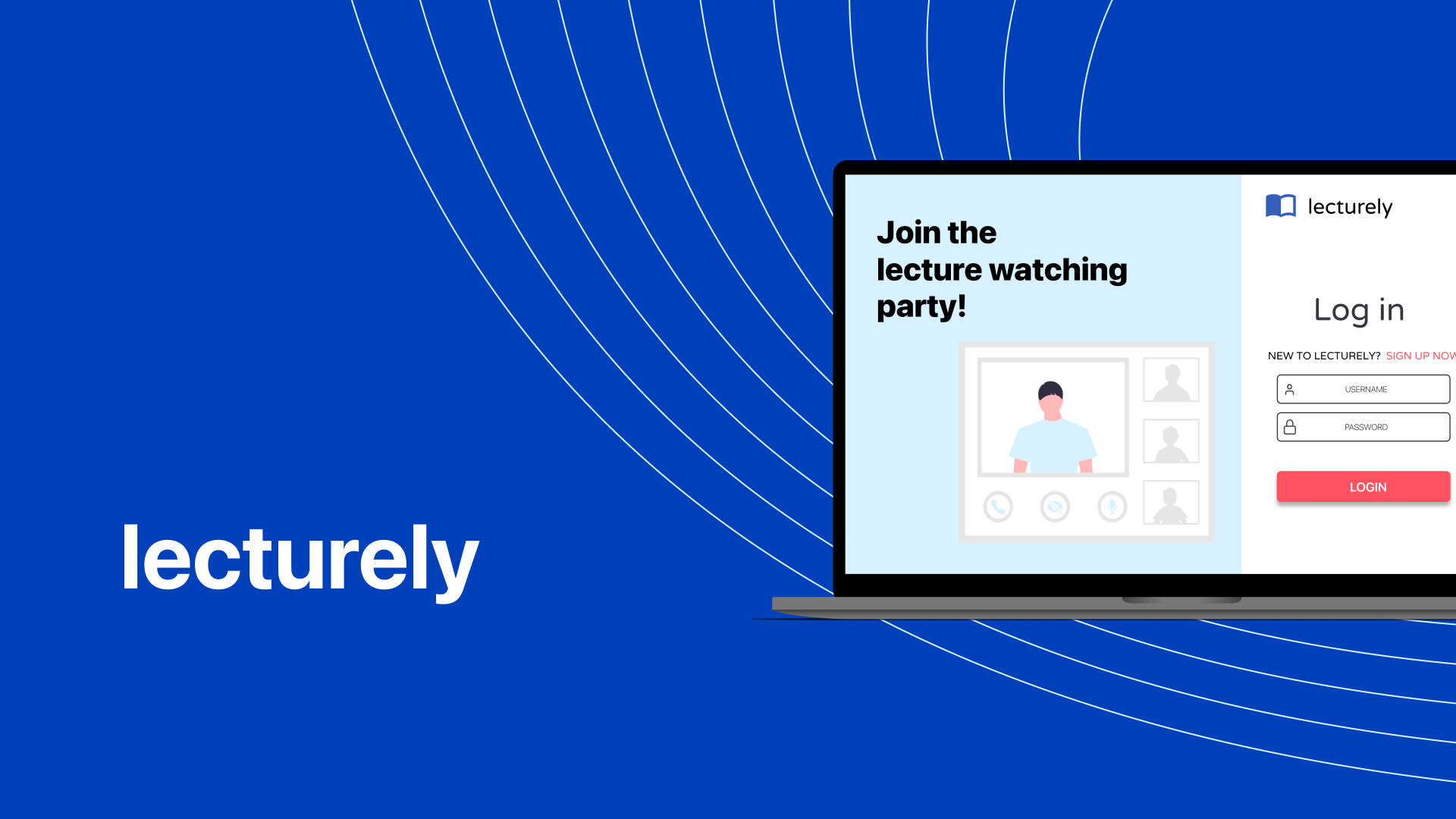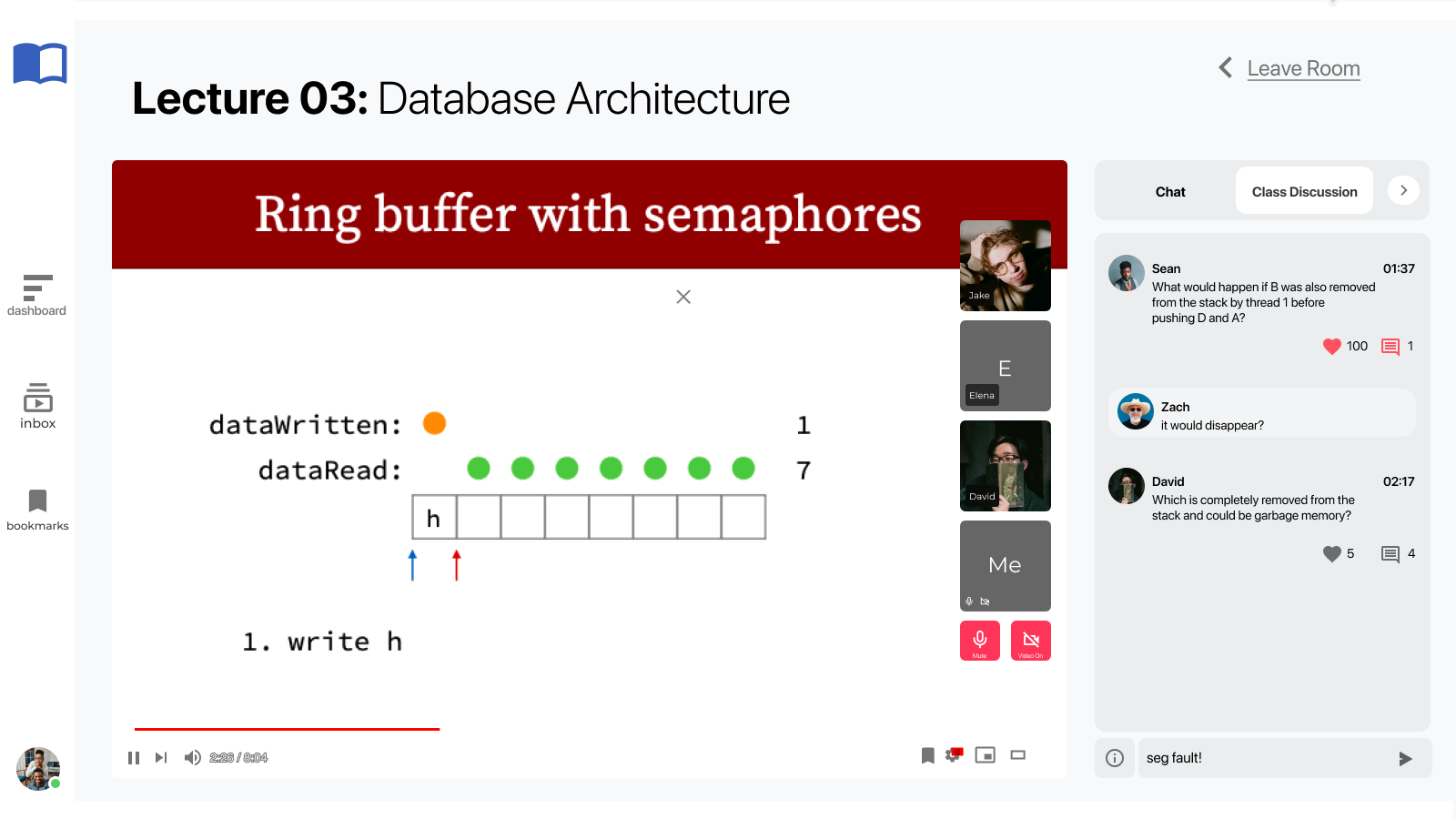
lecturely: bringing community to virtual classes with recorded lecture watch parties
tools: Miro, Balsamiq, Figma
roles: needfinding, user testing, prototyping, heuristically evaluating, high-fidelity prototyping
when: September - December 2020
Context
With the rise of remote learning and online education, we specifically wanted to address social anxiety associated with new online learning platforms. We want to understand how video conferencing may disenfranchise students from interacting with their peers and instructors and how we can guide them to proper academic activity. The social aspect is critical to education, so we dove into the intersection of remote collaboration, communication, and social spaces to better engage students.
Needfinding
We conducted several interviews with students and teachers struggling with the online format to scope out the problem space (they are summarized here).
The most common sentiments were “zoom doesn’t work” and “online education feels robotic”. Students felt disengaged, unmotivated, and that it was hard to stay accountable to watch lectures. We all know how easy it is to turn videos off and mute our microphones.
We identified key points from our research in an empathy map.
Teachers, freshman, and upperclassmen each presented their own challenges, with teachers primarily having difficulty with online tools, upperclassmen feeling unmotivated, and freshman being unable to meet new people and build a community of their own. The issues that they faced fell into: student engagement, lack of student community, difficulty of lesson planning, and lack of teacher community.
Our Solution
After brainstorming solutions for each, we decided on communal lecture watching, which was inspired by a popular web-app, Netflix Party. We envisioned that students would be able to watch recorded lectures together in small groups, while chatting and discussing with each other, ultimately allowing students to become more engaged and motivated in online classes. One essential feature was the “universal pause” (when one student in a watch party pauses the video, it pauses for the other students). This was meant to enhance the feeling of camaraderie while attending lecture.
Prototyping
We were inspired by already familiar platforms like Piazza and Canvas for our main login and dashboard pages, and this proved to be intuitive during our user testing. The first iteration of our prototype was done in Balsamiq in order to focus solely on navigation and functionality.
User Testing
Our test users concluded that our platform provided “a better way to consume recorded lectures.” Navigation across tabs and invites was an initial pain point which we improved upon in the following two rounds of user testing. The watch party interface with chat and class discussion features was also simplified.
Our Final Prototype
From the dashboard, the user can join ongoing lecture parties, view upcoming parties, create a new watch party, check schedule, and navigate to other tabs.
In the inbox, the user can accept or decline invitations and edit existing ones.
The user can check their calendar while creating an invitation.
During a watch party, the user can participate in the watch party discussion or in the general class discussion. When a participant pauses the lecture, it is paused for everyone in the watch party.
Summary
Online education platforms have stripped any sense of community students have felt during in-person classes. Watching recorded lectures is a solitary activity, making it hard to stay accountable to watch them in the first place and easy to become disconnected from the material.
Why do people go to cafes? Maybe to get coffee. But also to work. Seeing other people work makes us more likely to do the same and stay focused, which is the parallel we used to create the lecturely experience.






